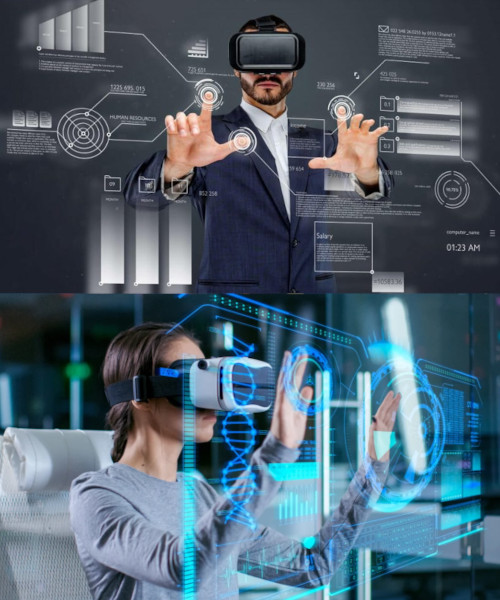Augmented Reality (AR) and Virtual Reality (VR)
Virtual Reality (VR) is a field that employs computer-generated scenes to simulate a realistic lifelike experience.
In this instructor-led, live training (onsite or remote), participants will learn the basics of Virtual Reality and how to create a VR application.
By the end of this training, participants will be able to:
- Understand the physical principles and different applications of Virtual Reality.
- Understand the challenges in Virtual Reality.
- Choose from the different platforms available for VR development.
- Create their own VR applications.
Format of the Course
- Interactive lecture and discussion.
- Lots of exercises and practice.
- Hands-on implementation in a live-lab environment.
Course Customization Options
- We will use the Unity platform to create a VR application.
- To request a customized training for this course, please contact us to arrange.
Requirements
- No programming experience is required.
Audience
- Developers
- Gamers
- Programmers
- Hobbyists

Course Outlines
Introduction
Overview of Virtual Reality
- What is VR?
- Immersive experience
- History of VR
Understanding Different Types of Virtual Environments
- True Virtual Reality
- Augmented Reality (AR)
- Holographic & Volumetric
- Mixed Reality (MR)
Exploring Different Types of VR Devices
- Tracking Devices
- VR Glasses
- VR Head Mounted Displays (HMDs)
- PC VR – Oculus Rift & HTC Vive
- Mobile VR – Google Cardboard & Samsung Gear
- CAVE VR Systems
Exploring Different Applications of Virtual Reality
- Medicine
- Tourism
- Entertainment (Video Games)
- Education & Training
Working with the Three Illusions in Virtual Reality
- Place Illusion
- Plausibility Illusion
- Embodiment Illusion
Understanding the Challenges in Virtual Reality
Exploring Different Platforms for VR Development
Developing 3D Virtual Reality Environments
- Understanding the Basics of 3D Graphics
- Using 3D Engines and Development Environments
Developing Virtual Reality Graphics
Using Sound in Virtual Reality and Using Advanced 3D Audio Techniques for Experience Enhancement
Understanding the Requirements of Content Creation for Virtual Reality
Working with Interaction in Virtual Reality
Moving Around in Virtual Reality
- Physical Navigation
- Virtual Navigation Techniques
Interacting with Objects in Virtual Reality
- Interacting with Objects within Reach
- Hyper-Natural Interaction
- Magic Interaction
- Physics Interaction
- Challenges in Virtual Reality Interaction
- User Interfaces in Virtual Reality
- Getting Ready to Develop Your First Virtual Reality Application
- Developing a Storyboard for Your Application Concept
- Developing a Working Prototype of Your Virtual Reality Application
- Testing Your Prototype
Developing the Application Proper
- Refining the Virtual Reality Interaction
- Implementing the Virtual Reality Graphics